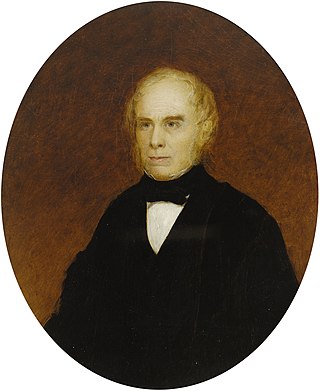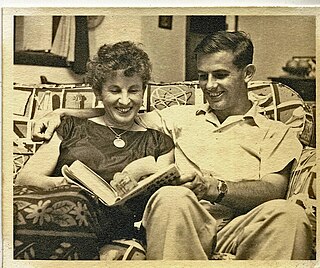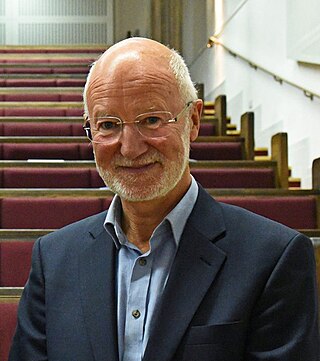Related Research Articles

Ornithology is a branch of zoology that concerns the "methodological study and consequent knowledge of birds with all that relates to them." Several aspects of ornithology differ from related disciplines, due partly to the high visibility and the aesthetic appeal of birds. It has also been an area with a large contribution made by amateurs in terms of time, resources, and financial support. Studies on birds have helped develop key concepts in biology including evolution, behaviour and ecology such as the definition of species, the process of speciation, instinct, learning, ecological niches, guilds, island biogeography, phylogeography, and conservation.

The Eurasian sparrowhawk, also known as the northern sparrowhawk or simply the sparrowhawk, is a small bird of prey in the family Accipitridae. Adult male Eurasian sparrowhawks have bluish grey upperparts and orange-barred underparts; females and juveniles are brown above with brown barring below. The female is up to 25% larger than the male – one of the greatest size differences between the sexes in any bird species. Though it is a predator which specialises in catching woodland birds, the Eurasian sparrowhawk can be found in any habitat and often hunts garden birds in towns and cities. Males tend to take smaller birds, including tits, finches, and sparrows; females catch primarily thrushes and starlings, but are capable of killing birds weighing 500 g (18 oz) or more.

The European rock pipit, or just rock pipit, is a species of small passerine bird that breeds in western Europe on rocky coasts. It has streaked greyish-brown upperparts and buff underparts, and is similar in appearance to other European pipits. There are three subspecies, of which only the Fennoscandian form is migratory, wintering in shoreline habitats further south in Europe. The European rock pipit is territorial at least in the breeding season, and year-round where it is resident. Males will sometimes enter an adjacent territory to assist the resident in repelling an intruder, behaviour only otherwise known from the African fiddler crab.
Christopher John Mead was a popular British ornithologist, author and broadcaster, and an influential member of the British Trust for Ornithology (BTO).

William MacGillivray FRSE was a Scottish naturalist and ornithologist.
Guy Mountfort was an English advertising executive, amateur ornithologist and conservationist. He is known for writing the pioneering A Field Guide to the Birds of Britain and Europe, published in 1954.
Christopher Miles Perrins, is Emeritus Fellow of the Edward Grey Institute of Field Ornithology at the University of Oxford, Emeritus Fellow at Wolfson College, Oxford and Her Majesty's Warden of the Swans since 1993.
Derek Almey Ratcliffe was one of the most significant British nature conservationists of the 20th century. He was Chief Scientist for the Nature Conservancy Council at the Monks Wood Experimental Station, Abbots Ripton, Huntingdon, retiring in 1989. Ratcliffe was the author of the 1977 Nature Conservation Review, a document which set out the most important sites for nature conservation in the United Kingdom. He also published various works on nature and conservation.
Jeremy John Denis Greenwood CBE is a British ornithologist and was Director of the British Trust for Ornithology (BTO) from 1988 until he retired in September 2007.
T. & A. D. Poyser began as a British publisher, founded by Trevor and Anna Poyser in 1973, to specialise in ornithology books. It was located in Berkhamsted, Hertfordshire, and later in Calton, Staffordshire.
Philip Arthur Dominic Hollom was a British ornithologist.

David William Snow was an English ornithologist born in Windermere, Westmorland.
Desmond Nethersole-Thompson (1908–1989) was a British teacher, ornithologist and writer. Of Irish stock, Nethersole-Thompson was brought up in the south of England, and educated at St Paul's School, London and the London School of Economics. From the 1930s he spent most of his life in Scotland and is notable for his contribution to ornithology through his monographs on various birds of the Scottish Highlands, as well as his other writings. He was one of a generation of country-lovers who transferred their field craft from stalking, hunting and collecting to observing the previously unstudied behaviours of wild animals.
Ronald Arthur Overton Hickling was a British ornithologist. He served as president of the Leicestershire and Rutland Ornithological Society. He died in Rothley, Leicestershire, at the age of 93.
James Denis Summers-Smith was a British ornithologist and mechanical engineer, a specialist both in sparrows and in industrial tribology.
Timothy Robert Birkhead is a British ornithologist. He has been Professor of Behaviour and Evolution at the University of Sheffield since 1976.

Nicholas Barry Davies FRS is a British field naturalist and zoologist, and Emeritus Professor of Behavioural Ecology at the University of Cambridge, where he is also a Emeritus Fellow of Pembroke College.
John Leonard Frederick Parslow (1935–2015) was an English ornithologist and author.
Stephanie Joy Tyler, also known as Steph Tyler, is a British ornithologist, zoologist, naturalist, conservationist, and author from Monmouthshire. She is particularly known for her work on Dippers and the preservation of river habitats.
Sarah Wanless is an animal ecologist in the UK and is an expert on seabirds; she is a Fellow of the Royal Society of Edinburgh and is Honorary Professor at the Universities of Glasgow and Aberdeen.
References
- 1 2 Ian Newton | Collins Archived 2013-12-20 at the Wayback Machine . The New Naturalists Online. Retrieved 3 December 2009
- 1 2 "Newton, Prof. Ian, (born 17 Jan. 1940)". www.ukwhoswho.com. doi:10.1093/ww/9780199540884.013.u29431. ISBN 978-0-19-954088-4 . Retrieved 25 January 2019.
- ↑ Newton, Ian (1986) The Sparrowhawk. T & A.D. Poyser Ltd. Calton. ISBN 0-85661-041-0
- 1 2 Ian Newton. The Migration Ecology of Birds Archived 2010-01-20 at the Wayback Machine . Buteo Books. Retrieved 3 December 2009
- 1 2 Newton, I. (2009) Introduction. In R.T. Watson, M. Fuller, M. Pokras, and W.G. Hunt (Eds.). Ingestion of Lead from Spent Ammunition: Implications for Wildlife and Humans. The Peregrine Fund, Boise, Idaho, USA. DOI 10.4080/ilsa.2009.0091
- 1 2 Ian Newton. Researcher Results. The Peregrine Fund. Retrieved 3 December 2009
- ↑ "RSE Fellows" (PDF). Royal Society of Edinburgh. Archived from the original (PDF) on 27 June 2004. Retrieved 10 January 2011.
- ↑ "Winners of our President's Medal".